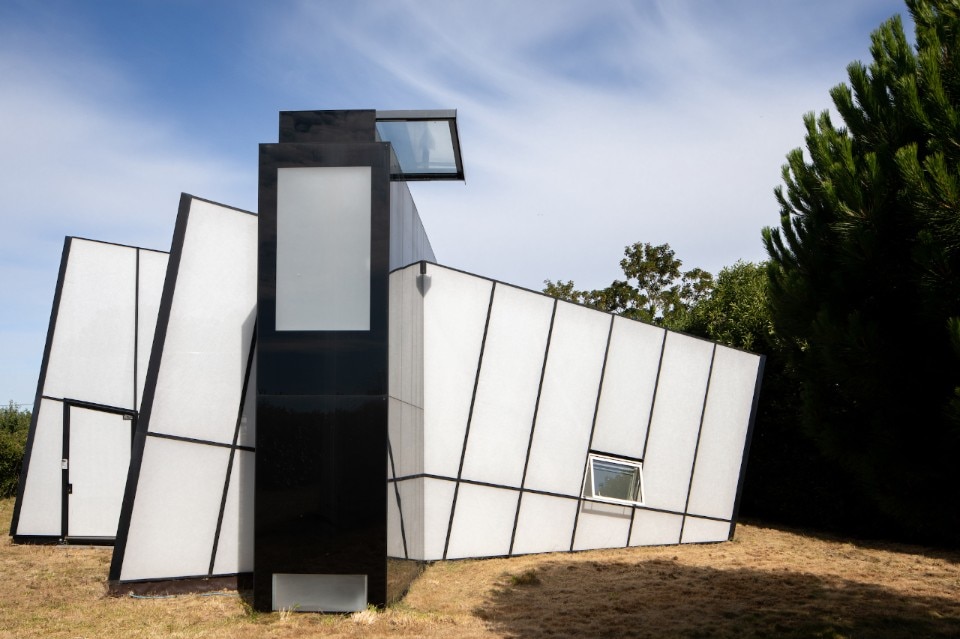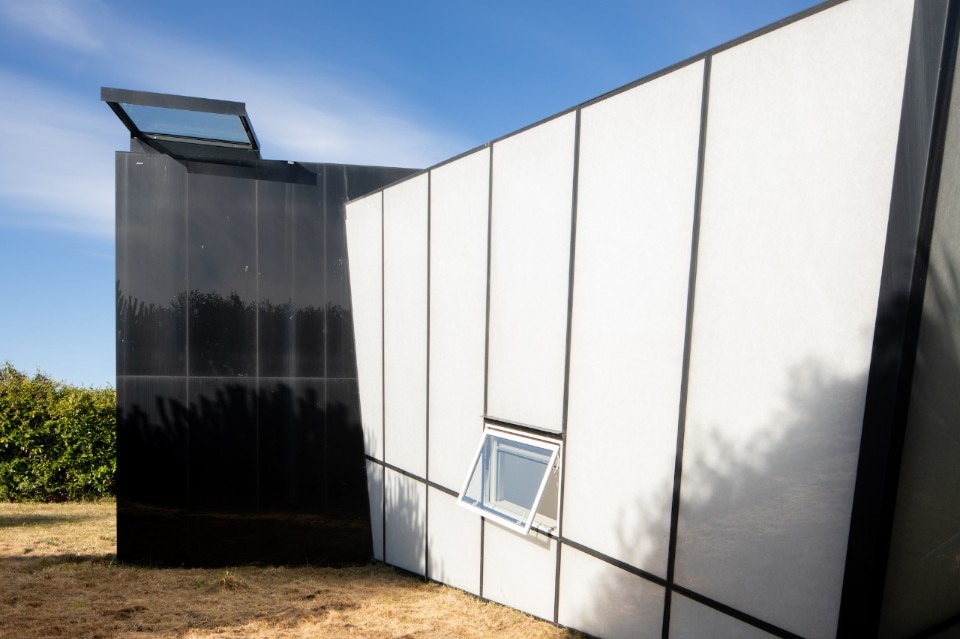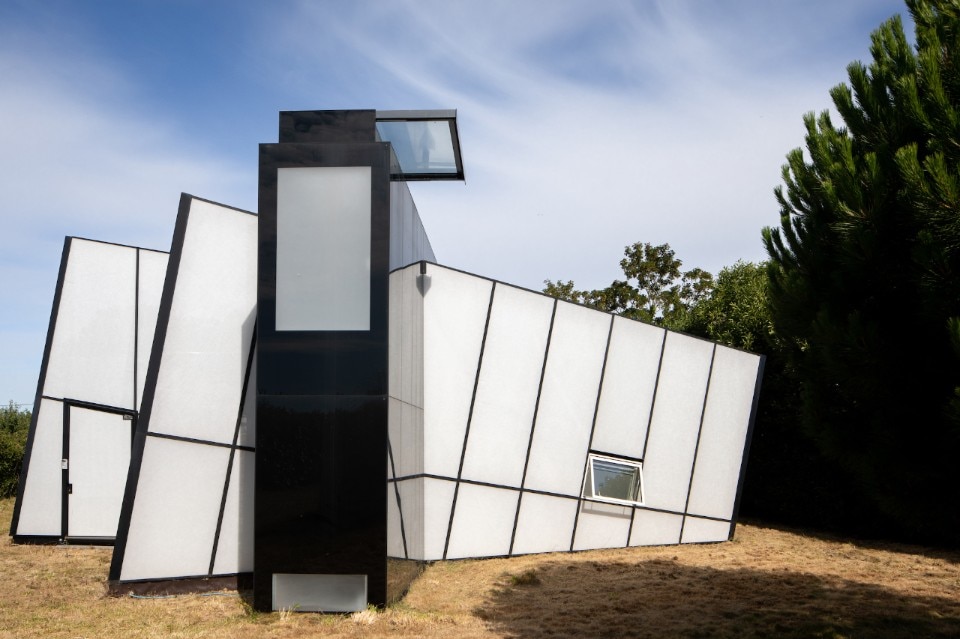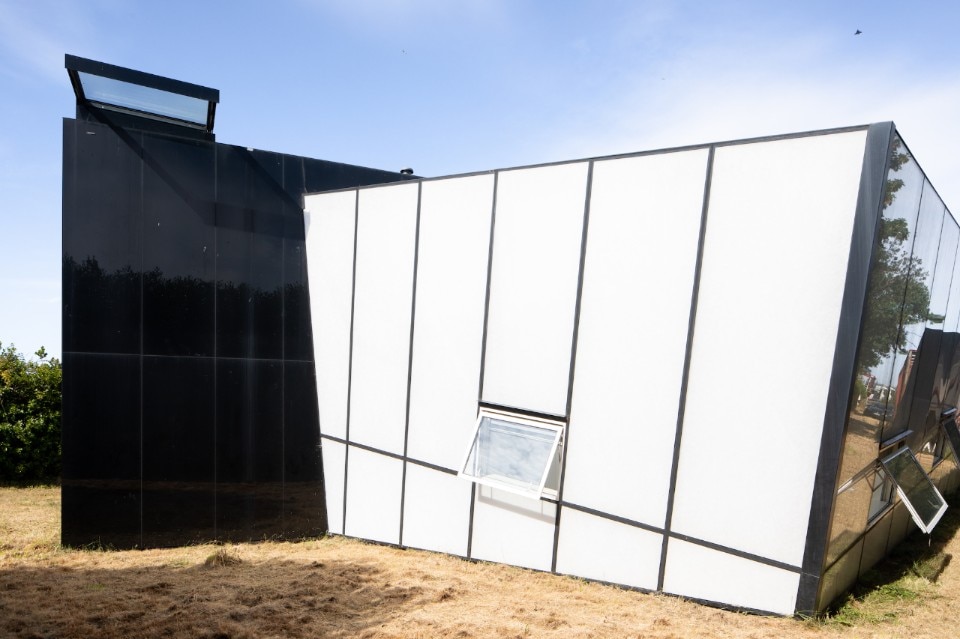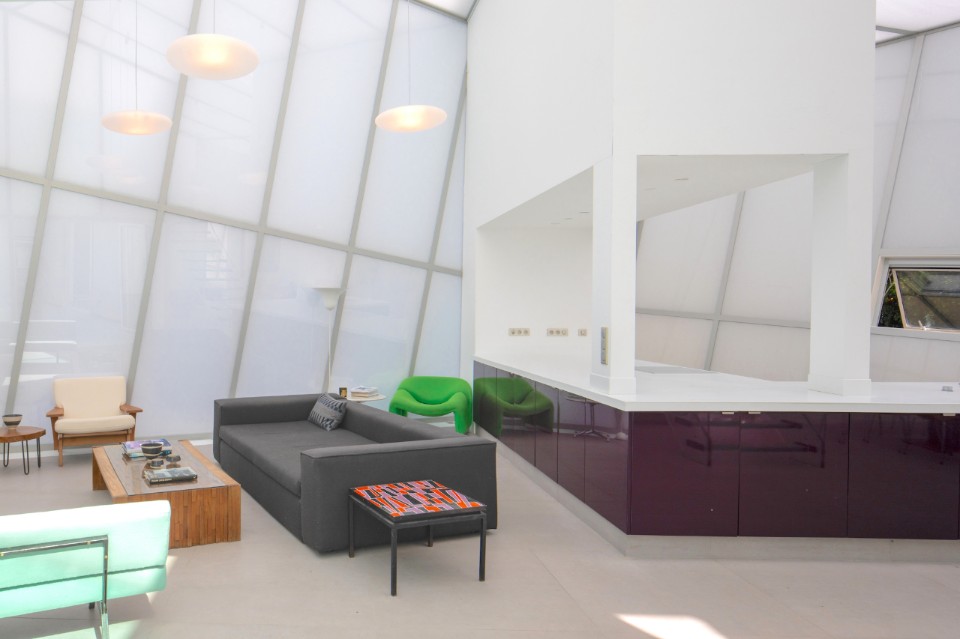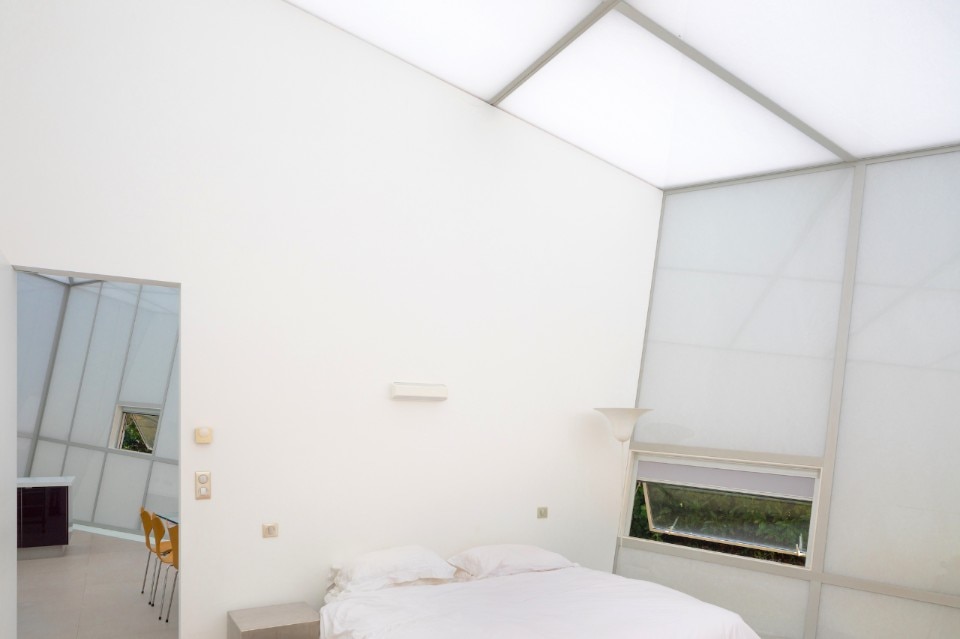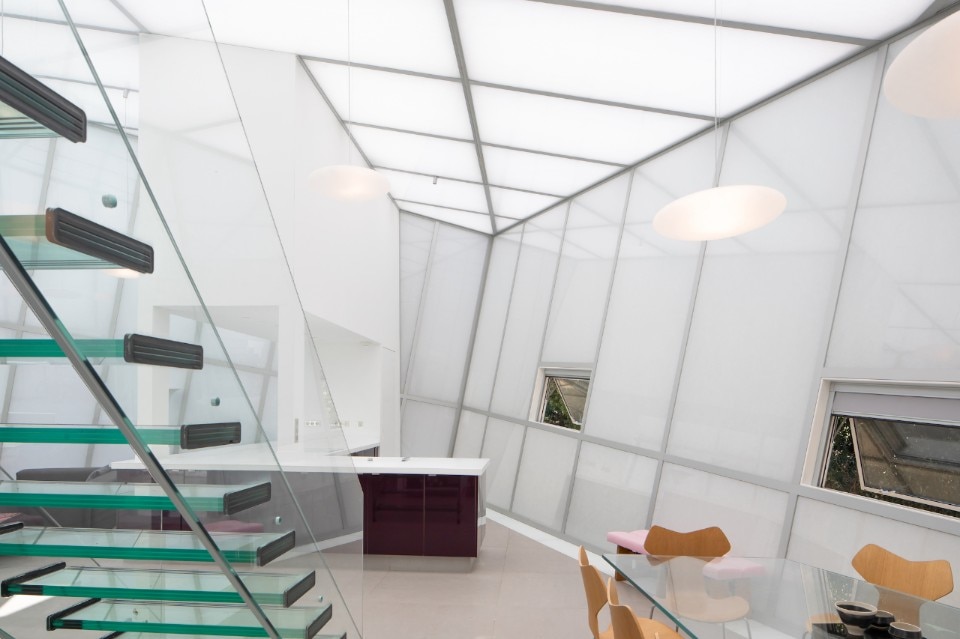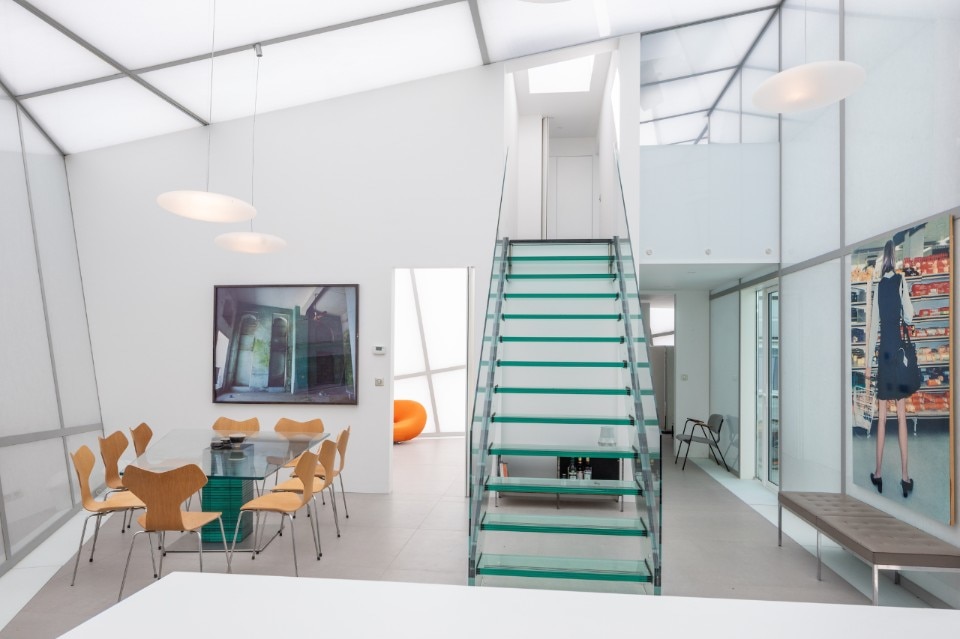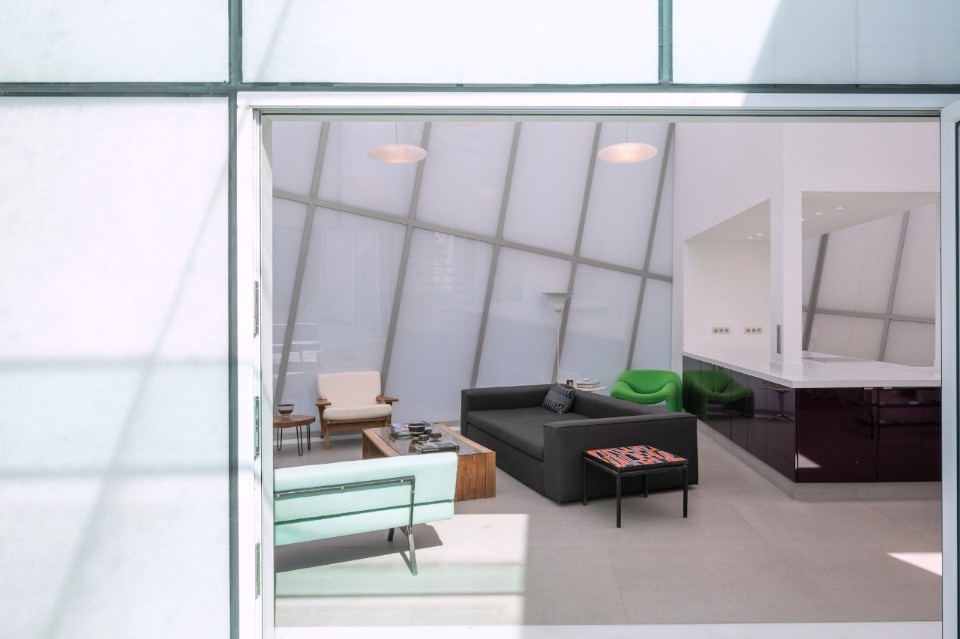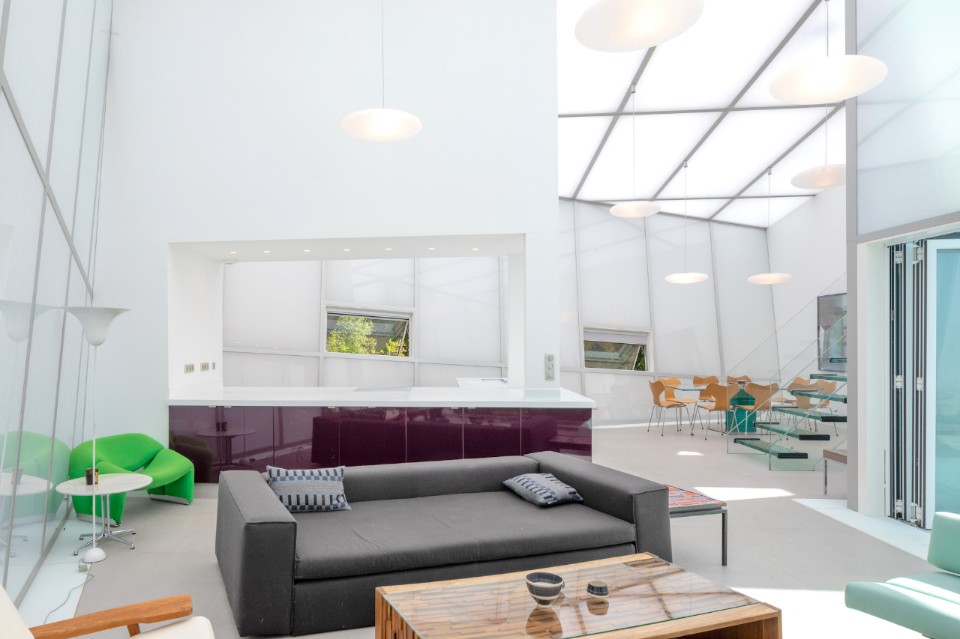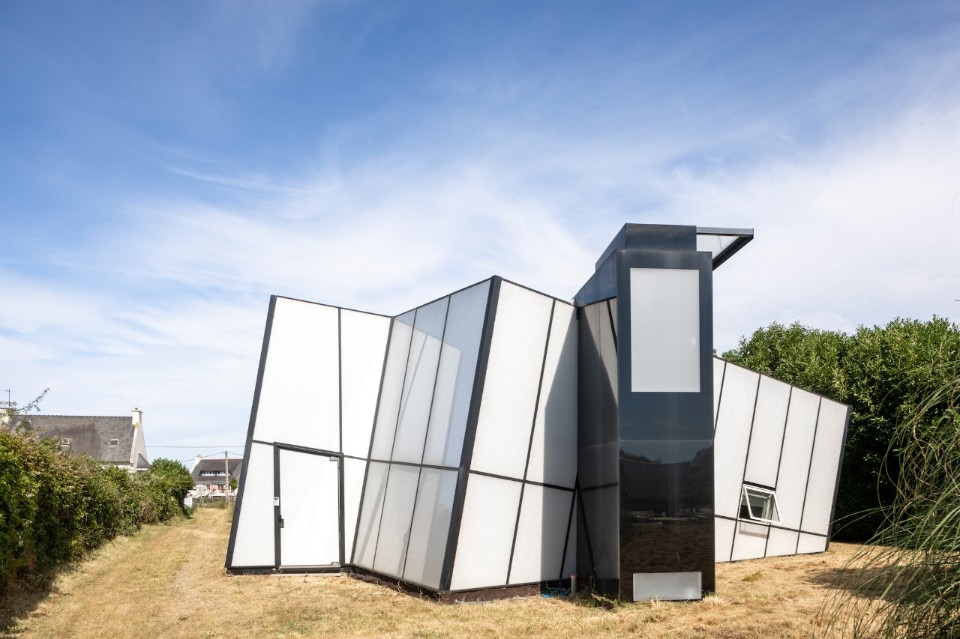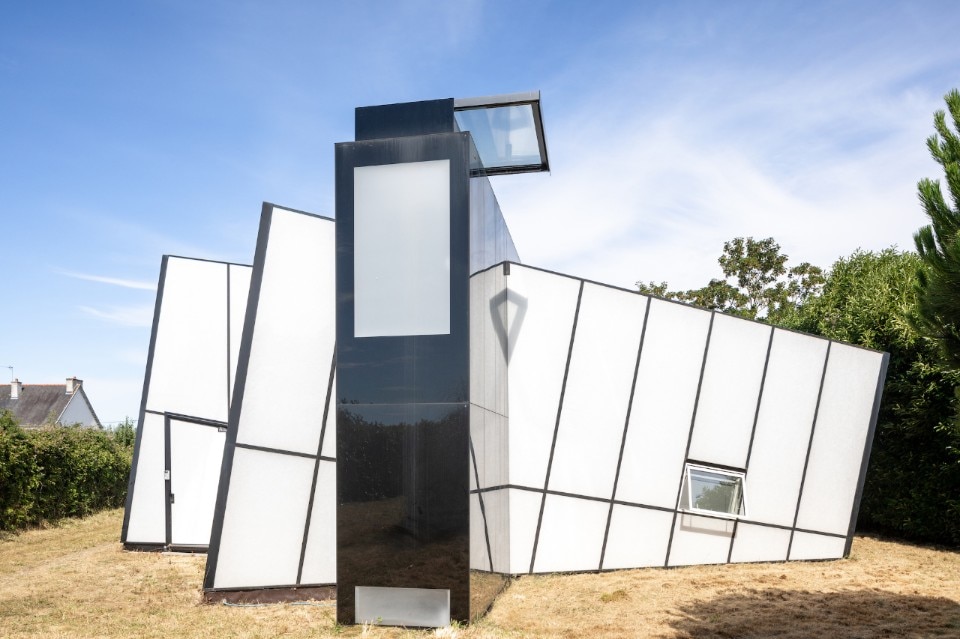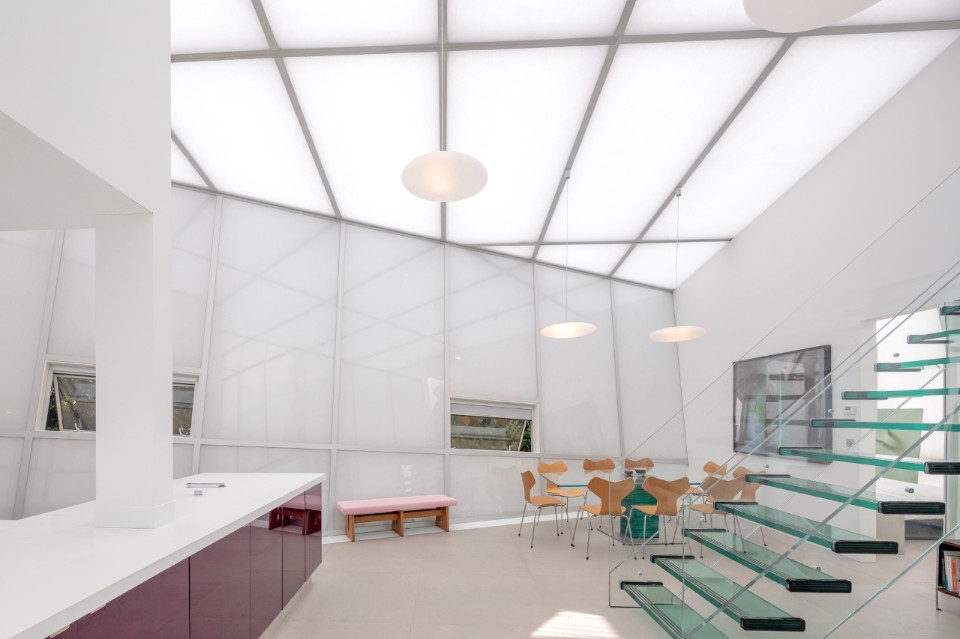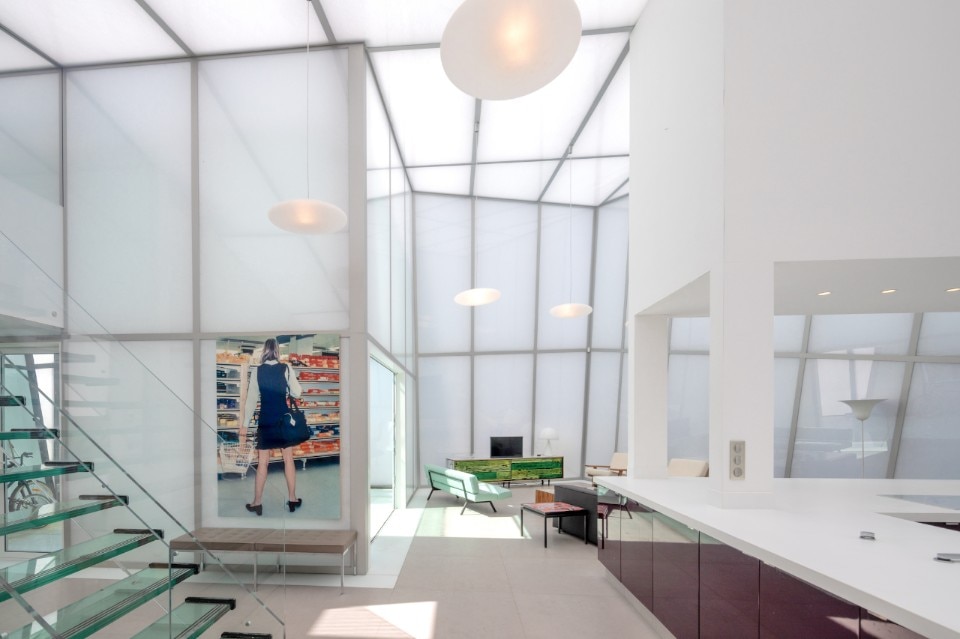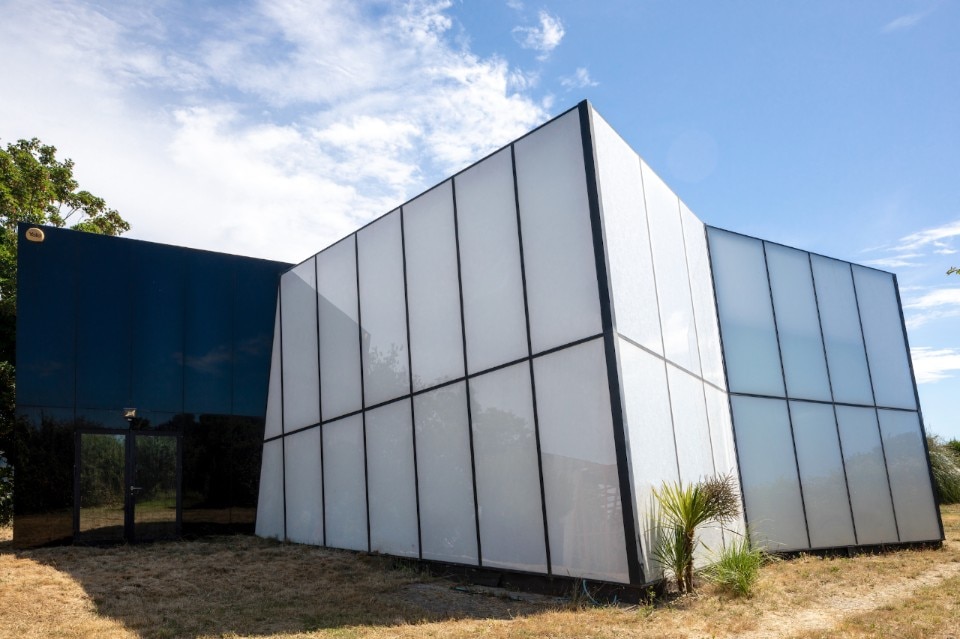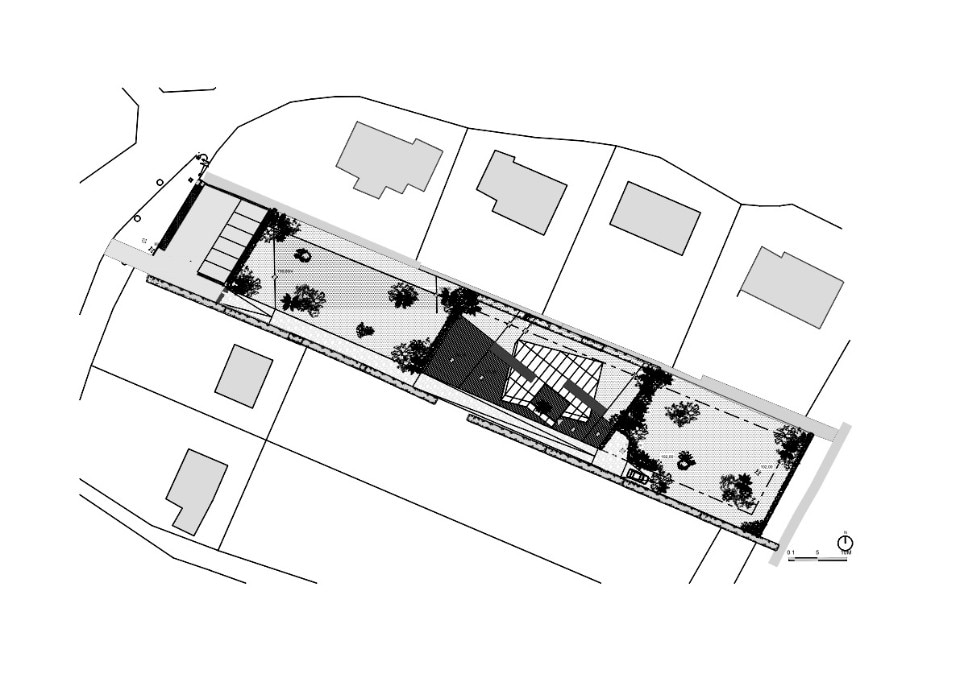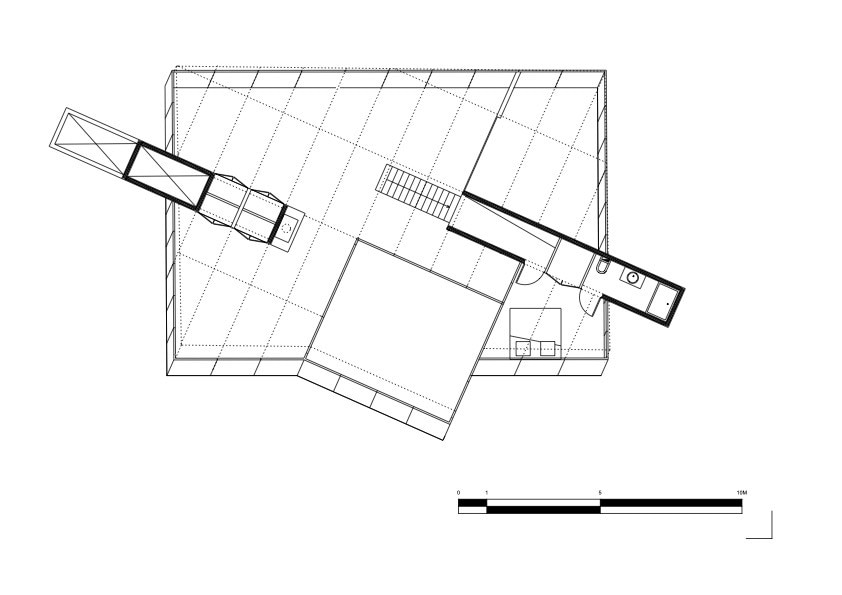In a suburb of the town of Carantec – a small French commune in the Brittany region – Studio Odile Decq has designed a private house defined externally by an opalescent sculptural box.
Taking its name from an icon of French modernist architecture designed by Pierre Chareau, Maison de Verre is a private house custom-designed for a client suffering from progressive and irreversible loss of sight. This condition was therefore turned into a design driver, having to meet the demand for perfect light in every room in the house, homogeneous and glare-free.
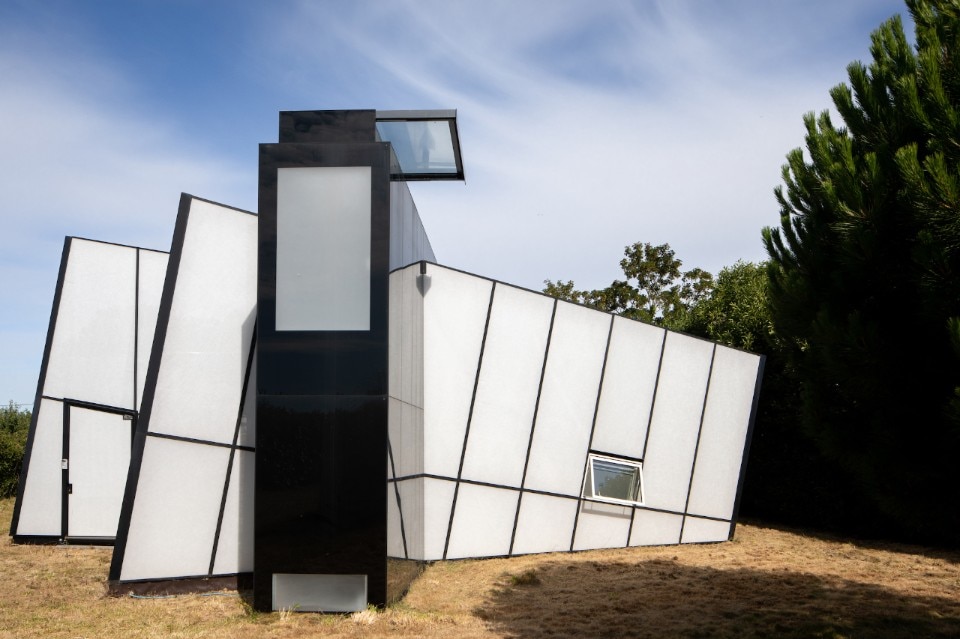
Hence the decision to create an architectural envelope entirely of glass, making the house a box of natural light. The complete translucence of the walls, facades and roof creates a homogenous and identical light in all points, and by mixing milky white glass with shiny, reflective black panels, the house appears slanted and alien to its grassy suburban site.
The sloping volume is eternally perforated by two longitudinal volumes of black glass in which the utilitarian functions of the house – such as bathrooms, storage, kitchen – are installed. Only a few small windows placed far down remain transparent and allow a close view of the surrounding garden. Studio Odile Decq also worked with a specialist glazing supplier, Okalux, to create walls with insulated panels of translucent glass, fixed in a concealed structural steel grid. A thin sheet of insulating fabric is sandwiched between the panels, ensuring that the filtering light is diffused and even, without casting strong shadows.
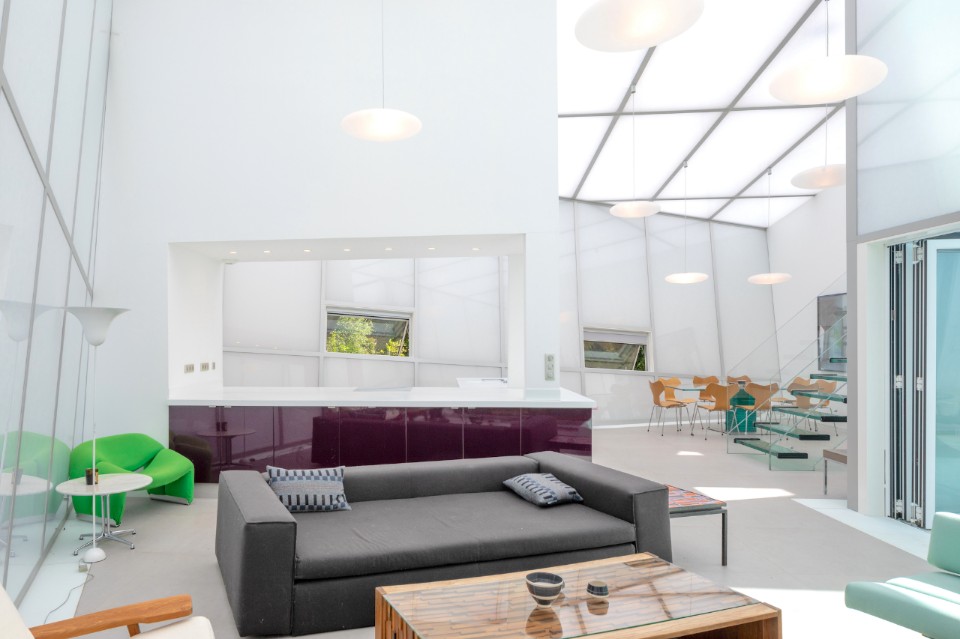
One enters the house through a sheltered patio that protects from the wind. From here one enters a double-height living space housing a living room, an open kitchen and a dining room. Two bedrooms, one of which is double-height, complete the first floor. On the first floor, accessed via an all-glass staircase, is a large bedroom and bathroom.
Another element that was given particular attention in the design was the artificial lighting, designed to echo the homogeneity of the natural lighting. The approach was to think of the lighting design from an internal point of view, taking into account the life inside the house and trying to make the space pleasant to live in and practical. The principle chosen was to design a lighting system fixed to the roof structure, specifically with a series of peripheral spotlights aligned along the facade.


